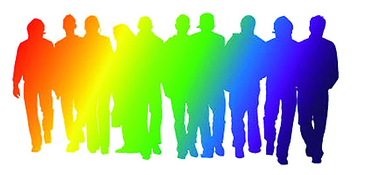Educational exclusion among LGBTQ youth

by Sara Ritsch
Staff Writer
GLSEN (Gay, Lesbian and Straight Education Network) researchers Emily Greytak, PhD and Joseph Kosciw, PhD discussed the drop out rates and school-to-prison pipeline among LGBTQ youth in a recent webinar with The Gayly. For lesbian, gay, bisexual, transgender and queer/questioning youth in the school system, significant disciplinary action can be taken against them due to harassment and discrimination.
In terms of school discipline, LGBTQ students learn harsh lessons in following the rules. This can be because of zero-tolerance policies, wherein you get one chance and then you’re out, and ableist, racial and homophobic disparities.
So far, there is hardly any government data for LGBTQ youth. All research is small scale and none of it includes transgender youth. This GLSEN study hopes to outline important aspects of the LGBTQ dropout rate. Here are some facts from a 2013 national school climate survey, a biennial survey of LGBTQ secondary school students that was population-based. Sample characteristics were surveyed from 7,898 middle and high school students in all 50 states and DC who were enrolled in school for 2012-2013.
“Youth were eligible to participate in the survey if they were at least 13 years of age, attended a K–12 school in the United States during the 2012–13 school year, and identified as lesbian, gay, bisexual, or a sexual orientation other than heterosexual (e.g., queer, questioning) or described themselves as transgender or as having another gender identity that is not cisgender (e.g., genderqueer). Participants completed an online survey about their experiences in school, including their educational aspirations, disciplinary experiences, and contact with the juvenile or criminal justice system,” according to GLSEN.
Two in five LGBTQ students reported being disciplined in school. The most common response was that they got detention, but 50 percent were suspended. Stark disparities found significantly more discipline in LGBTQ students, such as being called to the principal’s office, detention or suspension.
From the kids’ perspective, 9.2 percent were unfairly disciplined for identifying as LGBTQ. PDA (public displays of affection) was not disciplined for straight students, whereas 28.2 percent of LGBTQ students were punished for holding hands on the bus, even if there were no set rules against PDA.
Disparities are particularly high for trans students. In terms of enforcing gender norms, 19.2 percent of LGBTQ students reported their inability to dress in accordance with their gender identity. 31.6 percent of these students were trans. In addition, 10.8 percent were prevented from using their preferred name – and 42.2 percent of these were trans students. To use the bathroom or locker room of choice was limited for 18.7 percent of LGBTQ students, and a whopping 59.2 percent of those students were also trans. This is a giant leap against trans kids.
On top of these disparities, 18.1 percent of LGBTQ students reported not being allowed to attend a school dance with the same gender. 17.5 percent reported no LGBTQ student clubs, and 15.5 percent said they were prevented from wearing LGBTQ supportive clothing, like rainbows.
School victimization may lead to increased rates of discipline, according to GLSEN. This may mean that although they were bullied or harassed, they were disciplined for their retaliation. One thing GLSEN realized is that certain groups experienced higher rates of this than others: In this order, LGBTQ students felt discriminated against and overly disciplined if they were homeless, disabled, transgender females, other gender identities, lesbian, and then gay.
Of these, the multiracial kids and kids with disabilities were most likely to consider dropping out, the kids with alternative gender identities were more likely than the cisgender kids to drop out, and the homeless LGBTQ students were twice as likely as those with parents or guardians to drop out of school.
Factors leading to dropping out of a hostile or unsupportive school climate consisted of victimization, discrimination, absenteeism – one third of LGBTQ students missed at least one day of school that month because they felt unsafe or uncomfortable due to these factors – low academic performance due to lowered self-esteem and mental health concerns. According to GLSEN, kids with depression and low self-esteem were more likely to drop out because they could be “viciously tortured in public school – so much anxiety...unable to cope with being there.”
New GLSEN research is coming out in the Fall to help work with schools and administrators about this problem. “Schools are hostile environments for many LGBTQ students, riddled with peer victimization, institutional discrimination, and unfair disciplinary practices,” GLSEN says.
“These hostile climates effectively function to push LGBTQ students out of school, depriving them of the right to learn and limiting future opportunities. Some students are more targeted and more vulnerable to both school discipline, resulting in criminal and juvenile justice involvement.”
So, administrators, stop the harassment – Implement anti-bullying policies. Eliminate policies that discriminate against LGBTQ youth, like dress codes and gender-specific uniforms. Utilize graduated approaches to discipline with the goal of keeping youth in class. Incorporate an LGBTQ inclusive curriculum. Keep kids in school!
The Gayly – August 30, 2016 @ 12:30 p.m.





